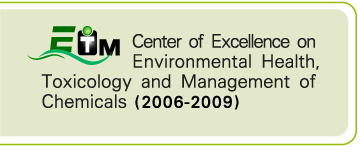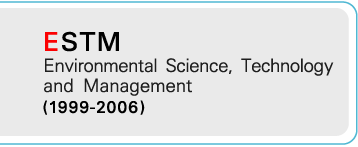ความคืบหน้า งานวิจัยสารหนูในข้าว
น.ส. สุมลธา หนูคาบแก้ว, ดร.นุชนาถ รังคดิลก และ รศ.ดร.จุฑามาศ สัตยวิวัฒน์ ห้องปฏิบัติการวิจัยเภสัชวิทยา สถาบันวิจัยจุฬาภรณ์ (CRI), สถาบันบัณฑิตศึกษาจุฬาภรณ์ (CGI) และศูนย์ความเป็นเลิศด้านอนามัยสิ่งแวดล้อมและพิษวิทยา ศูนย์ความเป็นเลิศด้านอนามัยสิ่งแวดล้อมและพิษวิทยา สำนักงานพัฒนาบัณฑิตศึกษาและวิจัยด้านวิทยาศาสตร์และเทคโนโลยี สำนักงานคณะกรรมการอุดมศึกษา กระทรวงศึกษาธิการ โดยสถาบันวิจัยจุฬาภรณ์ และสถาบันบัณฑิตศึกษาจุฬาภรณ์ ซึ่งเป็นสมาชิกศูนย์ความเป็นเลิศฯ ได้ให้ความสำคัญในการศึกษาวิจัย เรื่อง การตรวจวิเคราะห์สารหนูในข้าว ตั้งแต่ปี พ.ศ. 2550 ได้มีการเก็บตัวอย่างข้าวจากจังหวัดต่างๆ เกือบทั่วประเทศ มาทำการตรวจวิเคราะห์ปริมาณสารหนูอยู่อย่างต่อเนื่องจนถึงปัจจุบัน ซึ่งเป็นการเฝ้าระวังปริมาณสารหนูในข้าวเพื่อความปลอดภัยของผู้บริโภค และได้มีการเผยแพร่บทความที่ได้จากงานวิจัยเกี่ยวกับปริมาณสารหนูในข้าว ในวารสารต่างประเทศ และใน website ของศูนย์ความเป็นเลิศฯ และจากบทความ เรื่อง “ปริมาณของสารหนูในข้าว” ที่ได้เผยแพร่เมื่อเดือนกุมภาพันธ์ 2555 ใน Website ของศูนย์ความเป็นเลิศฯ คณะผู้วิจัยได้เขียนรวบรวมงานวิจัยของประเทศอื่นๆที่ได้ทำการศึกษาเกี่ยวกับสารหนูในข้าวและความเสี่ยงต่อการเกิดมะเร็ง ซึ่งจากข้อมูลที่มีการศึกษาในต่างประเทศในพื้นที่ที่มีปริมาณสารหนูในธรรมชาติสูง อาจจะมีความเสี่ยงในการได้รับสารหนูเข้าสู่ร่างกายเพิ่มขึ้น เมื่อได้รับสารหนูเข้าสู่ร่างกายในปริมาณมากและเป็นระยะเวลานานๆ ก็อาจทำให้มีความเสี่ยงในการเป็นมะเร็งบางชนิดมากกว่าคนอื่นๆ ในตอนท้ายของบทความได้สรุปไว้ว่า งานวิจัยจากต่างประเทศนั้นพบว่า ตัวอย่างข้าวไทยมีปริมาณสารหนูน้อยกว่าข้าวจากประเทศอื่นๆ แต่อย่างไรก็ตาม การตรวจวิเคราะห์สารหนูในข้าว มีความยุ่งยากซับซ้อน… (read more)
 Center of Excellence on Environmental Health and Toxicology (EHT)
Center of Excellence on Environmental Health and Toxicology (EHT)










